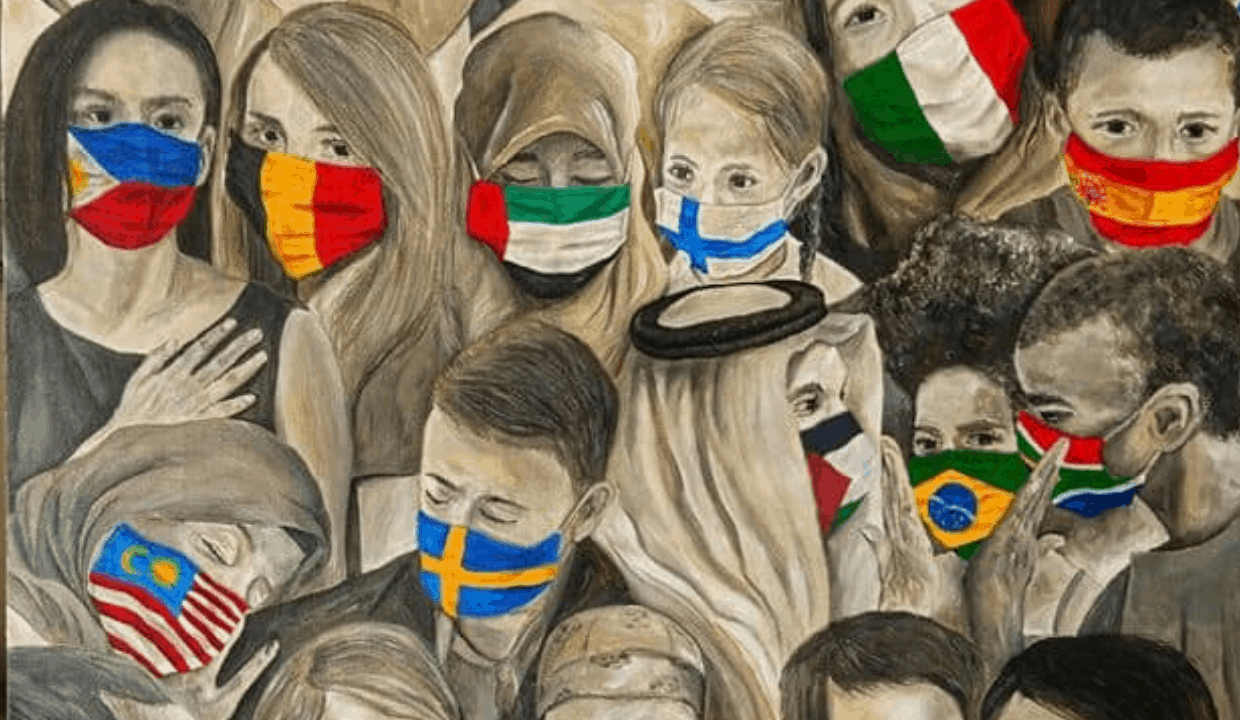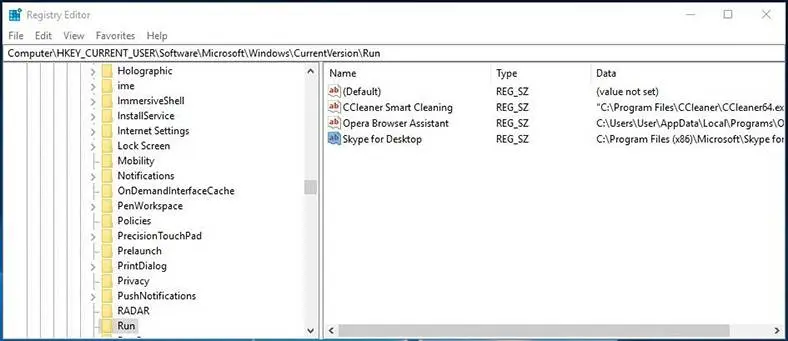Stress, rumors, even violence: Virus fear goes viral. Read full article. China Outbreak Fear Goes Viral. 14, 2020, photo, a woman wearing a face mask walks on a almost empty street at the Chinatown in Incheon, South Korea. Even as cases and deaths from the new virus mount, fear is advancing like a tsunami - and not just in. An Arizona coronavirus patient’s story went viral this week after the 23-year-old experienced a mini-stroke due to COVID-19. Riley Behrens, of Tempe, Ariz., tweeted a thread Sunday evening.
© Provided by Associated Press Counter demonstrators shows a poster reading: 'shame on you' as the protest against a so called 'silent march' against the corona policy of the federal government, at the district Prenzlauer Berg in Berlin Germany, Sunday, Nov. 22, 2020. (Fabian Sommer/dpa via AP)BERLIN (AP) — A video went viral Sunday in Germany of a confrontation at a coronavirus protest, where a young woman compared herself to a famous Nazi resistance fighter and then was accused by a security guard of “trivializing” the Holocaust.
Several people protesting coronavirus restrictions in Germany that seek to tamp down new infections have tried to depict themselves as victims of government persecution. Some have even put on Stars of David, symbols that the Nazis forced Jews to wear during the Third Reich before they killed them.
The woman spoke on stage Saturday evening in the northern city of Hannover, telling fellow protesters “I feel like Sophie Scholl, since I've been active in the resistance, giving speeches, going to protests, distributing flyers.”
Scholl fought the Nazis with her brother and other members of the resistance group White Rose. After distributing flyers at a Munich university, she was convicted of high treason and was executed at age 22 by the Nazis in 1943.
While the female protester was talking, a young security guard approached the stage, saying repeatedly that “I'm not going to be a security guard for this kind of idiocy.” The woman looked at him in disbelief while he called her speech “a trivialization of the Holocaust.” He was ushered away by security and she threw down the mic in anger.
© Provided by Associated Press Protestors attend a so called 'silent march' against the corona policy of the federal government at the district Prenzlauer Berg in Berlin Germany, Sunday, Nov. 22, 2020. (Fabian Sommer/dpa via AP)German Foreign Minister Heiko Maas tweeted Sunday that the comparison with Scholl “mocks the bravery that was needed to take a stand against the Nazis.”
“Nothing connects the corona protests with the resistance fighters. Nothing!' Maas wrote.
The Nazis orchestrated the genocide of six million European Jews during the Third Reich. They also killed tens of thousands of other people who opposed their regime, such as communists, Social Democrats, members of the church or resistance fighters.
German officials, meanwhile, have been generally praised for their handling of the pandemic. The European Union nation has reported over 14,000 coronavirus-related deaths, a toll only one-fourth that of Britain's.
___
Follow AP’s coverage at https://apnews.com/hub/coronavirus-pandemic and https://apnews.com/UnderstandingtheOutbreak
How To Clear Shortcut Virus
News and views about coronavirus has spread via social media in a way that no health emergency has done before.
Aurora alxalienware user support. Platforms like Twitter, Facebook, Tik Tok and Instagram have played critical roles in sharing news and information, but also in disseminating rumours and misinformation.
Getting the Message Out
Early on, snippets of information circulated on Chinese social media platforms such as Weibo and WeChat, before state censors banned discussions. These posts already painted a grim picture, and Chinese users continue to play cat and mouse with the Internet police in order to share unfiltered information.
As the virus spread, so did the social media conversation. On Facebook and Twitter, discussions have often taken place ahead of official announcements: calls to cancel the Australian Formula One Grand Prix were trending on Twitter days before the official decision.
Similarly, user-generated public health explainers have circulated while official government agencies in many countries discuss campaign briefs with advertising agencies.
Many will have come across (and, hopefully, adopted) hand-washing advice set to the lyrics of someone’s favourite song:
I made a #WashYourLyrics to Under Pressure. pic.twitter.com/6nvRQqLbgV
— Bird Baphomet (@Remi_Rogers) March 10, 2020
Widespread circulation of graphs has also explained the importance of “flattening the curve” and social distancing.
Debunking myths
Social media have been instrumental in responding to COVID-19 myths and misinformation. Journalists, public health experts, and users have combined to provide corrections to dangerous misinformation shared in US President Donald Trump’s press conferences:
A 68 second snapshot of how the Trump presidency will be remembered. pic.twitter.com/tIt1sTuuoI
— Rachel Maddow MSNBC (@maddow) March 13, 2020
Other posts have highlighted potentially deadly assumptions in the UK government’s herd immunity approach to the crisis:
The British govt is saying let the virus spread so 60% of Brits become infected and herd immunity is reached. But that means:
– 39.6 million infected
– 5.5 million hospitalized with severe disease
– 2 million critically ill
-277,000 deaths
No other country is suggesting this pic.twitter.com/9ct7HfNvcv
— Dr. Seema Yasmin (@DoctorYasmin) March 14, 2020
Users have also pointed out inconsistencies in the Australian cabinet’s response to Home Affairs Minister Peter Dutton’s coronavirus diagnosis.
The circulation of such content through social media is so effective because we tend to pay more attention to information we receive through our networks of social contacts.
Similarly, professional health communicators like Dr Norman Swan have been playing an important role in answering questions and amplifying public health messages, while others have set up resources to keep the public informed on confirmed cases:
I've been tracking every #Covid_19 case in Australia since it started. Here are a few interesting charts from that data https://t.co/XcH7TqonXC#coronavirusaus#auspol#covid19australia#covid19
— Juliette O'Brien (@juliette_io) March 13, 2020
Even just seeing our leaders’ poor hygienic practices ridiculed might lead us to take better care ourselves:
Doctors: Avoid shaking hands and touching common spaces
Trump Coronavirus Response Team: pic.twitter.com/OBCmp1orje
— The Daily Show (@TheDailyShow) March 13, 2020
Some politicians, like Australian Prime Minister Scott Morrison, blandly dismiss social media channels as a crucial source of crisis information, despite more than a decade’s research showing their importance.
This is deeply unhelpful: they should be embracing social media channels as they seek to disseminate urgent public health advice.
Shortcut Virus Goes Viral Disease
Stoking fear
The downside of all that user-driven sharing is that it can lead to mass panics and irrational behaviour – as we have seen with the panic-buying of toiletpaper and other essentials.
The panic spiral spins even faster when social media trends are amplified by mainstream media reporting, and vice versa: even only a handful of widely shared images of empty shelves in supermarkets might lead consumers to buy what’s left, if media reporting makes the problem appear much larger than it really is.
Perspective: Pandemic, panic and toilet paper math https://t.co/69o5NYMuaH
— The Washington Post (@washingtonpost) March 15, 2020
News stories and tweets showing empty shelves are much more news- and share-worthy than fully stocked shelves: they’re exceptional. But a focus on these pictures distorts our perception of what is actually happening.
The promotion of such biased content by the news media then creates a higher “viral” potential, and such content gains much more public attention than it otherwise would.


Levels of fear and panic are already higher during times of crisis, of course. As a result, some of us – including journalists and media outlets – might also be willing to believe new information we would otherwise treat with more scepticism. This skews the public’s risk perception and makes us much more susceptible to misinformation.
A widely shared Twitter post showed how panic buying in (famously carnivorous) Glasgow had skipped the vegan food section:
Welcome to Glasgow, where a global pandemic hits and still nobody will touch anything vegan. pic.twitter.com/f3FM1HByxN
— Guffers (@gavmacn) March 7, 2020

Closer inspection revealed the photo originated from Houston during Hurricane Harvey in 2017 (the dollar signs on the food prices are a giveaway).
This case also illustrates the ability of social media discussion to self-correct, though this can take time, and corrections may not travel as far as initial falsehoods. The potential for social media to stoke fears is measured by the difference in reach between the two.

The spread of true and false information is also directly affected by the platform architecture: the more public the conversations, the more likely it is that someone might encounter a falsehood and correct it.
In largely closed, private spaces like WhatsApp, or in closed groups or private profile discussions on Facebook, we might see falsehoods linger for considerably longer. A user’s willingness to correct misinformation can also be affected by their need to maintain good relationships within their community. People will often ignore misinformation shared by friends and family.
And unfortunately, the platforms’ own actions can also make things worse: this week, Facebook’s efforts to control “fake news” posts appeared to affect legitimate stories by mistake.
Rallying cries
Their ability to sustain communities is one of the great strengths of social media, especially as we are practising social distancing and even self-isolation. The internet still has a sense of humour which can help ease the ongoing tension and fear in our communities:
The World Health Organization has announced that dogs cannot contract Covid-19. Dogs previously held in quarantine can now be released. To be clear, WHO let the dogs out.
— Liam Hackett (@DiageoLiam) March 12, 2020
Younger generations are turning to newer social media platforms such as TikTok to share their experiences and craft pandemic memes. A key feature of TikTok is the uploading and repurposing of short music clips by platform users – music clip It’s Corona Time has been used in over 700,000 posts.
— bradley babendir (@therealbradbabs) March 18, 2020
We have seen substantial self help efforts conducted via social media: school and university teachers who have been told to transition all of their teaching to online modes at very short notice, for example, have begun to share best-practice examples via the #AcademicTwitter hashtag.
The same is true for communities affected by event shutdowns and broader economic downturns, from freelancers to performing artists. Faced with bans on mass gatherings, some artists are finding ways to continue their work: providing access to 600 live concerts via digital concert halls or streaming concerts live on Twitter.
Such patterns are not new: we encountered them in our research as early as 2011, when social media users rallied together during natural disasters such as the Brisbane floods, Christchurch earthquakes, and Sendai tsunami to combat misinformation, amplify the messages of official emergency services organisations, and coordinate community activities.
Especially during crises, most people just want themselves and their community to be safe.
- is Professor, Creative Industries, Queensland University of Technology
- is Associate Professor in Digital Communication, Queensland University of Technology
- is Senior Lecturer, Queensland University of Technology
- is Visiting Postdoc, Queensland University of Technology
- This article first appeared on The Conversation
Related posts:
